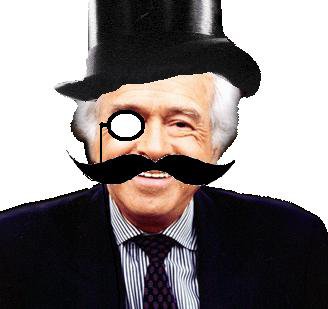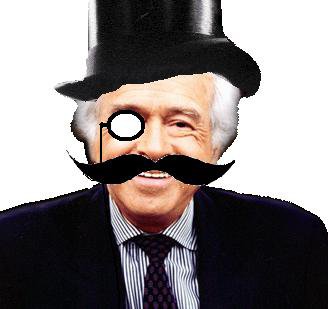

Here’s a photo from my latest promo shoot. Going on all my business cards, in all my books. Even in other peoples books (Even the ones I haven’t written!)
This one’s for you, Michael.
Sorry for the large gap since my last post. I’ve been busy being banned across the internet and spurting bullshit opinions on the forums I’m not banned on, in turn getting myself banned for talking about being banned. Very meta. Some dickhead already made a movie about it (STOLE MY IDEAS!!!!) about a banning within a banning. …..Or was it a dream within a dream? I forget.
By the way, my memory system is amazing, you’ll never forget a thing. Send an envelope with your dignity and 500 clams (not dollars, literal clams) to me, and I MAY consider sending you worthless peons something.
Today, I’ll be talking about a book that contains so many half assed or terribly put ideas, I may have to defecate in my pants when reading it to cover up how shit the material in the the book is. Either that, or I just shit myself randomly due to my ageing bowels.
The book is “Brass Knuckles” by Doug Edwards. His name has popped up quite a bit on my shit list of things-to-never-perform-or-recommend-unless-I-hate-the-person type of magic, and he has been published an excessive amount of times in Apocalypse and in another previously collected title. This reads like “Baby’s first magic book” at the Marlo/Vernon Orphanage for kids whose parents died in a card collection avalanche; it’s smeared with human shit, half the pages are missing and the rest are illegible due to the crayon and shit stains. I bought this on a recommendation from someone behind the counter at a magic store, and felt that for the price paid, and the expectations on which it was recommended, I was very let down. Which is normal, because everyone and everything lets me down (nothing is as amazing as I am), but in this case, VERY let down.
Although some ideas and roots of bigger ideas exist in the book, it doesn’t merit reading, buying, owning or even being within spitting distance of the book.
The book is divided into 4 sections:
For the Palms, shuffles and lifts section, I was very underwhelmed at the material. The illustrations were all you needed to look at to understand the sleight’s intention.The write ups of the methods gave the same amount of information. The methods are poorly written up, making the techniques finesses, if there were any, to not be noted or explained.
My main issue with this section (and for the material in the book as a whole) is that most of it is a bastardisation of existing effects and techniques with little to no credit on most points, and no reason or purpose shown as to why this new variation has been offered except for “variation for variation’s sake”. Other points just exist with no need at all.
2 good examples in this section are “Another Tenkai!” and “Uplifted”
“Another Tenkai!” is essentially a Tenkai steal off the top from a mechanics grip where the card ends up in left hand Tenkai. That reads very messily and the technique looks and feels the same. It’s a lot of wrist killing and turning of the hands to manoeuvre the card into position, adding more opportunities to expose an already angle-sensitive concealment. In other words, it’s a piece of shit and isn’t worth the effort.
“Uplifted” is a handling of the Elrick one handed top palm that is a standard move today (John Elrick, 1930, The Magic Wand Magazine, March-May issue). This whole item just shouldn’t exist. The opening “method” is noted as being the author’s own technique/finesse. Which is verbatim the standard method. The illustrations show the deck as if you were 69’ing a midget and got them to draw the move from their view. This then leads into the classic colour change using this technique to get in position. No bueno.
Although I’m taking a dump on the author here, I have to say there are some notable points that exist. There’s a handling for Marlo’s Spade shuffle, but using a Broken-Thompson cut/Lennart Green haphazardness to it that could make it look remotely okay (no credits at all) It’s ironic that this shuffle idea is uncredited, yet later the author references ‘Marlo in Spades’. For the most part though, this section could have been skipped entirely and the majority of the sleights/variations taught in a paragraph or two during the context of an effect where they would make more sense or at least be more considerable for the reader..
I mean.. he devotes almost 2 pages to using a pinky break with a Hindu shuffle. Then cutting at the same break to do a riffle shuffle, controlling the card to the top.
How did that take 2 pages? Seriously!? ….What the fuck am I reading?
Next, to the Cuts, Controls and Changes.
Similar to the first section, most of the material is recycled or appears under a title of “by Doug Edwards”, but the introduction cites the sleight or idea to be Slydini’s or Scarne’s. In print though, the item is titled as “Blah” by Doug Edwards, so technically when looked up, he gets the credit. Sneaky bastard.
There is a big issue here in that the descriptions do no justice to these great names and their legacies. It feels like most of the filler in this section is padded out with name-dropping to make the items seem more appealing. But for the most part, the issue is that the author shows no understanding of the finesses in the write up that the originator had. I call this the HL paradox, which happens when a certain author imprints his own thoughts and opinions onto another magician’s work but ends up taking all the heart and soul out of it.
For a great example of this and how it ruins a perfectly good magic book/magician’s repertoire, read ‘Star Quality’, an early book collecting the work of David Regal. Then compare how palatable that material is to his more recent ‘Constant Fooling’ or ‘Close up and Personal’ where the essence of Regal’s persona and style really shine. In this case, it happens for the sleights, but the issue is the same.
Further into this section, he takes items which are common knowledge and basic card handling and credits it as his own creation. Taking a pinky break, wrist turning then cutting to the break for a shuffle is not original. I don’t think anyone had the balls to claim that shit before him because it was a dick move to do so. Also, to further show how haphazard and illogical the write ups are, during control where a hand to hand spread is used, he cites that a LePaul spread works perfectly here. This does not add to the technique or the effect. That is a whole line wasted on that suggestion. Thank you for nothing, fuckface.
To further show how useless some of the items are, he had a write up for a classic pass false cut as a 3 packet cut, doing one extra pass. If I could somehow portray a slow clap in written form, it would be useful right about now.
Onto the third section, Hard Hitting Mysteries.
The first effect was the biggest kick in the teeth ever. It’s essentially the idea of having a card’s identity printed on or in the box somehow. Brass Knuckles was released during 2006, around the time of Luke Dancy/Daniel Garcia’s Tricycle Deck as well as the custom decks released a year or so before by Ellusionist had the different reveals printed on the barcodes and around the box. The author in this case uses the idea of a box revelation, but just tells you to buy the stamps and put them on the inside of the case yourself. Voila. That’s the trick. 1 page wasted. This can be used as a nice addition to a routine (for example, this would seem perfect for Paul Harris’ Overkill effect from the Art of Astonishments, where one of the revelations is the card’s identity on the box flap) but the effect goes nowhere. What a shot to the nuts.
From here, I kind of gave up on expecting anything remotely good or worth reading. He teaches another control which he uses in context of an ambitious card routine (one phase), and also how to make Hofzinser transparent cards and some shit with corner shorts. Nothing really worth mentioning or learning.
One thing I will say that is nice is the Haunted deck effect (“Really Haunted”) where he notes the method is not his, but again titles it as his own (See end for credit*). This is probably the only good effect/idea in the book, and it’s something you will either love instantly, or hate. The rest of the effects are mostly items stolen from other magicians, rehashed bullshit or some of his effects from Apocalypse that he has included to pad the book out further to make it look like he’s created more material.
I won’t even go too far into what the the last “Bonus” items are like. Here’s why: they consist of a cleanup for the Colour Vision box effect, a bead on string effect, tips on a vanishing bird cage and the Haunted Key, false deals and how to mangle a deck of cards out of it’s cellophane. So, pretty much shit that no one will ever consider or use. The “bonus items” made me want to violently vomit into a sack then beat the author with it. That’s how bad it was to read.
Overall, I feel that there are some roots of good ideas in this book and it could have done a lot better, but they aren’t well written, discussed enough or utilised to their full capacity. The content is mostly unoriginal, recycled bits and pieces from other people, or variations on methods or effects which are too elementary or shit that no one else has ever considered them or published them. This feels like it should be considered as the magic book equivalent of a Youtube promo video for a 10 year old, showcasing some of the shittiest magic and transition effects you have ever seen.
Classy book, and shit I will really use..?
Yeah, no, go fuck yourself Mr Edwards.
That concludes our broadcast for today…
Click.
LH
Credit:
* The Haunted deck described is utilising an idea that Jack Avis devised. Originally in the 1960’s, Jack Jansen was taught the method by an anonymous magician in Holland. He then sent a prepared card to Lewis Jones, who was close with Avis. However, the prepared card came apart while in the mail, so Jack devised this method/handling. For more information and a write up of some more ideas for this effect, see May 1999 Magicana column in Genii Magazine, “The Dutch Ghost”, Jack Avis.